Classification of Fire
Class A fires involve ordinary combustible materials: wood, paper, trash, plasic and cloth. Class A fires are usually relatively slow in their initial development and growth, and because these materials are solids, they are somewhat easier to contain. Class A fires leave an ash after the material has been consumed.
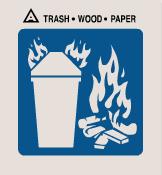
Class A Fire
Class B fires involve flammable and combustible liquids and flammable gases such as Gasoline, Fuel oil, Paint, Butane and Propane. These fires usually develop and grow very rapidly. Class B materials are fluid in nature, which allows them to flow and move. This makes dealing with them somewhat more difficult than Class A materials. These materials are common in many settings. These fires typically do not leave an ash.
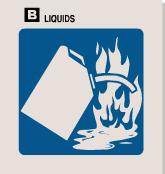
Class B Fire
Class C fires involve energized electrical equipment such as motors, appliances, and machinery. This is the only classification of the five that is not directly related to the type of fuel. The fact that a live electrical circuit is involved is the determining factor. Remove the power and the burning materials may actually fall into one or more of the four other classes. If the electric power is disconnected, the fire is no longer considered class C. Whether the device being considered is turned on or not is unimportant in this classification. Power to the device makes it Class C even if the device is turned off.
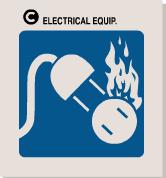
Class C Fire
Class D fires involve combustible metals such as Potassium, Sodium, Magnesium, Aluminium, Titanium, and Zirconium. These materials are usually difficult to ignite but create intense fires once started. Class D fires are very difficult to extinguish, but, fortunately, they are relatively uncommon in most industries.
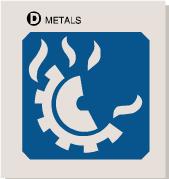
Class D Fire
Class K fires involve cooking oils and greases such as animal fats and vegetable fats. This is the newest of the fire classes.
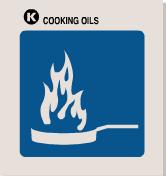
Class K Fire
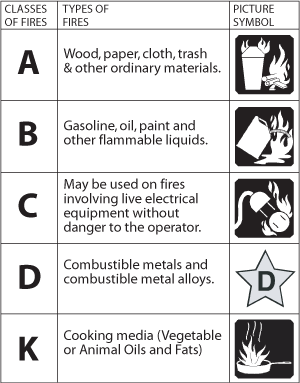
All Classes of Fire (A,B,C,D,K)
Leave a comment